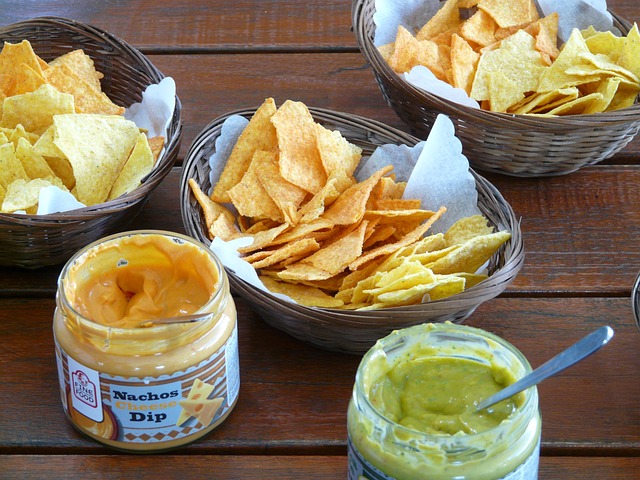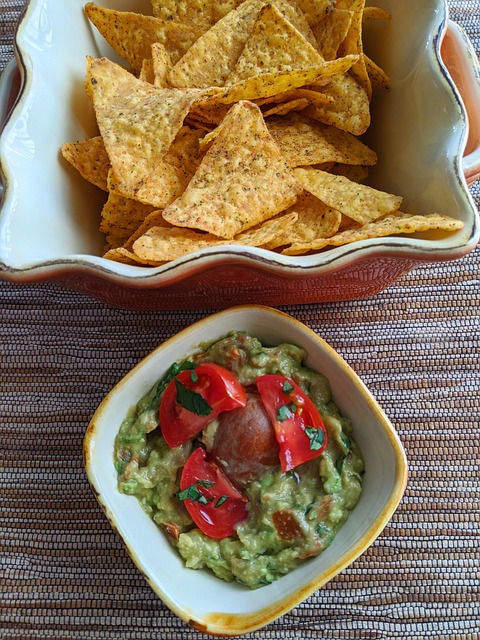The Basic Tortilla Chips Mission celebrates Mexican culinary heritage through authentic, handcrafted chips made with high-quality ingredients like sun-kissed corn flour and carefully sourced oils. Hand-rolled and fried to perfection, these chips offer a balance of crispy and tender textures, infused with aromatic flavors without burn. This traditional method, passed down through generations, preserves Mexico's cultural heritage and ensures every bite transports diners on a sensory journey through the country's diverse regions. Using simple ingredients like flour, water, salt, lard or vegetable oil, and meticulous techniques, these chips create a symphony of flavors that set them apart from store-bought alternatives.
In the heart of every authentic Mexican restaurant beats the rhythm of tradition—embodied in the simple yet profound art of handmade tortilla chips. This article delves into the ancient process behind these crispy symbols of Mexican cuisine, from the careful selection of flour types to the skilled rolling and shaping that ensures perfection with every bite. We explore why these basic tortilla chips are more than just a side—they’re a mission to transport diners to the vibrant lands of Mexico.
- The Art of Handmade Tortilla Chips
- – Exploring the traditional method and its significance in Mexican cuisine.
- Ingredients: The Foundation of Flavor
- – Discussing key components that contribute to authentic taste, including flour types and cooking techniques.
The Art of Handmade Tortilla Chips

The art of crafting handmade tortilla chips is a dedication to perfection, rooted in the rich culinary traditions of Mexico. Unlike their mass-produced counterparts, these chips embody the essence of authenticity and quality. The basic tortilla chip mission revolves around using only the finest, natural ingredients—flour made from sun-kissed corn, carefully sourced oils, and a touch of salt that balances the taste.
Skilfully shaped by hand, each chip undergoes a meticulous frying process to achieve a golden-brown crispness that is both satisfyingly crunchy and tender. The art lies in balancing the heat, ensuring the chips are never burnt but rather infused with an aromatic flavor. This labor of love results in a texture that crumbles just enough, offering a sensory experience that transports diners directly to the vibrant streets and warm hearts of Mexico.
– Exploring the traditional method and its significance in Mexican cuisine.

In the heart of every authentic Mexican restaurant, a simple yet profound process unfolds: the art of making tortilla chips from scratch. The traditional method involves hand-rolling corn or wheat tortillas into thin, crispy strips, then carefully frying them until they achieve that golden-brown perfection. This age-old technique is more than just a culinary practice; it’s a cultural legacy deeply rooted in Mexican cuisine. Each chip tells a story of heritage and community, as families have passed down this skill through generations, preserving a basic yet essential component of their rich gastronomic tradition.
The significance of hand-made tortilla chips extends beyond taste. They serve as a culinary canvas, allowing chefs to showcase their skills and creativity. From simple seasoning to complex marinades, these chips become versatile vehicles for flavors, transporting diners on a sensory journey through Mexico’s diverse regions. In the context of Mexican restaurants, embracing this traditional method is a mission to keep alive not just a recipe but a piece of cultural heritage, ensuring that every bite echoes with the rich tapestry of Mexican culinary history.
Ingredients: The Foundation of Flavor

The foundation of any great Mexican dish lies in its ingredients, and homemade tortilla chips are no exception. Authentic basic tortilla chips start with simple, high-quality components—flour (either corn or wheat), water, salt, and sometimes a bit of lard or vegetable oil. These basic elements combine to create a dough that is then shaped into thin circles and fried until golden brown, resulting in a crispy texture that’s essential for the best chip experience.
The art lies in balancing these ingredients perfectly. Too much flour can make the chips tough, while too little might leave them limp. The right amount of salt enhances the natural flavors, ensuring each bite is a symphony of textures and tastes. This attention to detail and use of fresh, basic ingredients are what set apart the best homemade tortilla chips from their store-bought counterparts, fulfilling the mission to deliver an authentic Mexican dining experience.
– Discussing key components that contribute to authentic taste, including flour types and cooking techniques.

The authenticity of basic tortilla chips lies in the careful selection of key components, ensuring a taste that harks back to traditional Mexican cuisine. The type of flour plays a pivotal role; authentic recipes often use a blend of pure, high-quality corn flour and wheat flour for a balanced texture and flavor profile. This combination allows for a crisp exterior while maintaining a slightly chewy interior, a hallmark of handcrafted chips.
Cooking techniques also contribute significantly to the overall taste experience. Traditional methods involve hand-rolling the tortillas, allowing for consistent thickness and ensuring each chip cooks evenly. Deep-frying in high-quality oil at the right temperature seals in the flavors and creates that irresistible crispness. These time-honored practices, when combined with fresh ingredients, result in tortilla chips that capture the essence of Mexican culinary heritage.
Handmade tortilla chips are not just a side dish; they are a culinary art deeply rooted in Mexican culture. By employing traditional methods and selecting the right ingredients, such as high-quality flour and time-honored cooking techniques, restaurants can create authentic Basic Tortilla Chips that elevate any meal. The journey from dough to crispy crunch is a testament to the dedication of Mexican chefs, ensuring that each bite resonates with the rich heritage of their cuisine.
